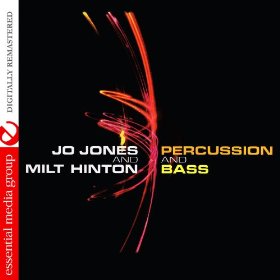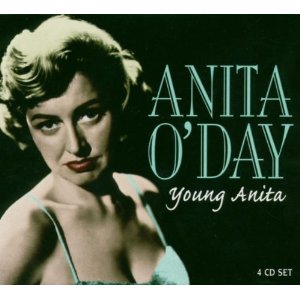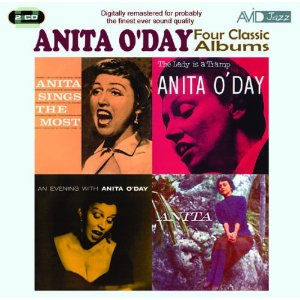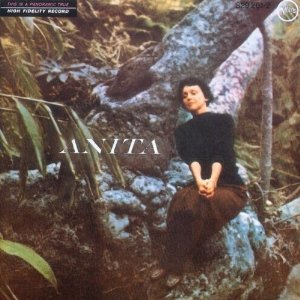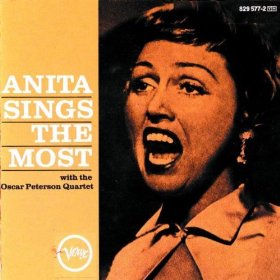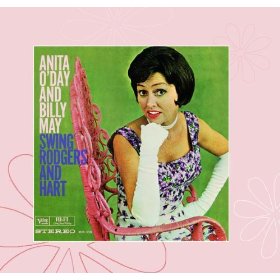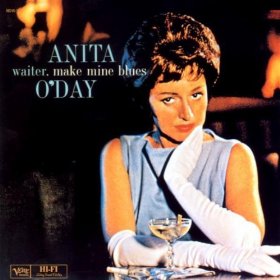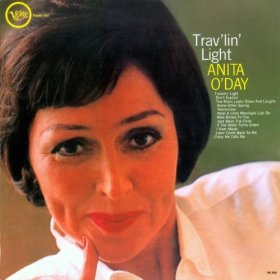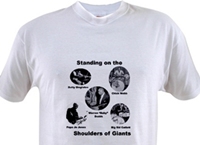If you need a reason to study Monk here is one that is as good as any: the drummers he chose for his ensembles. Here are a few that should convince you: Art Blakey, Philly Joe Jones, Shadow Wilson, Roy Haynes, Ben Riley and Frankie Dunlop to name but a few.
Also, Monk's ideas about music and drummers are interesting:

One of Monk's drummers - I cannot remember who - mentioned that if Monk detected the drummer getting comfortable in a certain tempo, he would change it to keep him on his toes. That shows in Monk's recordings and performances. I cannot count the various renditions - recorded and live - I have heard of Monk's standards like Blue Monk or Straight, No Chaser, and how different each was. Especially the tempo. That, along, should compel any drummer to listen to a lot of Monk and to practice to some of his albums.
The key question is, where to start? I am a big believer in bang-for-your-buck, when possible, when I am shopping for music and I typically look at box sets and imports first. Here are three collections that are [relatively] inexpensive and filled with examples of Monk's music and his drummers. First is Mysterious Blues.
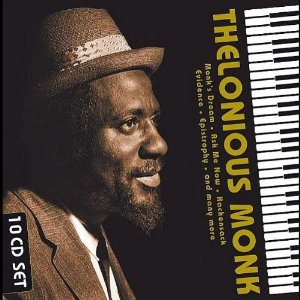
The ten discs in this set range from 1944 to 1956 and most of the tracks feature Monk as a sideman more often than as a leader.
I found the sound quality to be more than acceptable, but certainly not up to audiophile standards.
The only information given with respect to tracks is a listing on the back of the box, and a slightly more expanded version on the back of each cardboard wallet that also includes the composer credit and running time for each track, plus total time for the disc.
I have managed to track down some - but not all - information for the discs. I can nail down the sources of a handful of tracks from each disc. Here is a summary:
- CD1 contains some tracks from Coleman Hawkins - Bean And The Boys (Prestige PR 7824) recorded in October 19, 1944.
- CD2 contains some tracks from Thelonious Monk - Genius Of Modern Music, Vol. 1 (Blue Note BLP 1510) recorded in October 1947.
- CD3, CD4 and and CD5 contain some tracks from The Complete Blue Note Recordings Of Thelonious Monk (Mosaic MR4-101) recorded between 1947 and 1952.
- CD6 and CD7 contain some tracks from Thelonious Monk - Monk (Prestige PRLP 7053) recorded in November 1953 and May 1954.
- CD8 contains some tracks from Thelonious Monk And Sonny Rollins (Prestige PRLP 7075) recorded between November 1953 and October 1954.
- CD9 contains tracks from two albums: Miles Davis - Bags' Groove (Prestige PRLP 7109) and Miles Davis And The Modern Jazz Giants (Prestige PRLP 7150), both of which were recorded during the same session on December 24, 1954.
- CD10 seems to have individual tracks taken from a number of recordings, making it nearly impossible to cite a single source for the majority of tracks.
Here is a track from CD8 (featuring Art Taylor on drums):
The above box set has examples from Monk's Blue Note sessions, so the next two recommendations I am going to make pick up in the Prestige and Riverside years, then into the Comumbia period.
The Prestige and Riverside years are well represented in Four Classic Albums

The albums included in this set are:
- Thelonious Monk Plays The Music Of Duke Ellington
- Thelonious Monk & Sonny Rollins
- Brilliant Corners
- Thelonious Monk Trio
It's a temptation to cop out and include a clip of the trio playing Caravan, but I am going to include the one track that showcases Monk's love for Ellington and superb musicianship of Monk and the ensemble because this would be the last song I would want to tackle in a piano trio:
I happen to be a Sonny Rollins fan to the point of considering him a national treasure, so when I first heard this album I focused on his and Monk's playing. Later I cane to realize what a treasure this album is with respect to bassist-drummer collaboration, and also the diversity of drumming styles throughout the relatively short track list. Bassists on this album are Percy Heath of Modern Jazz Quartet fame and Tommy Potter who was a stalwart in Charlie Parker and Miles Davis ensembles (among others.) Drummers on this album are Art Blakey, Art Taylor and one about whom I know next to nothing, Willie Jones.
Here is Tommy Potter and Art Taylor backing Monk and Rollins on one of the tracks from the album:
Another amazing tenor saxophonist with whom Monk collaborated is John Coltrane. See Prelude to Monk for specifics and clips.
Brilliant Corners is much more than just another album in this set. In 2003 the Library of Congress included it a group of fifty recordings chosen that year by to be added to the National Recording Registry. And the moniker brilliant in the title is appropriate. As a drummer you should appreciate Max Roach in the drum chair (not to mention the inclusion of Oscar Pettiford and Paul Chambers on bass). As a musician, though, you should not focus on any one aspect of this album for the first few hundred listens - step back and let the entire album bathe you in brilliant genius. Then start listening to Max. Here is a beautiful piece composed by Monk in honor if his dear friend Pannonica de Koenigswarter. Max's brush work on this track is exquisite in my opinion. You can hear the love in Monk's playing and his adding the celeste into the composition giving it a classical European flavor shows Monk's keen intellect. Sonny Rollins on tenor and Ernie Henry on alto add music to the piece, and, of course, Oscar Pettiford is right there with Max.
The final album in this set provides yet another study in bassist-drummer collaboration. Here is Percy Heath on bass (and his only appearance on the album) with Art Blakey on drums performing one of my favorite Monk tunes. Blakey's comping is a joy to hear, and I love the way that Heath holds things down.
The next set of albums is from the Columbia years circa 1962-67: Original Album Classics

Albums included in this set are:
Instead of providing a clip from Straight, No Chaser, which features Larry Gales on bass and Ben Riley on drums, with Charlie Rouse on tenor saxophone, I am going to include a live clip from a 1965 BBC broadcast.Underground has the same line-up as Straight, No Chaser, with Jon Hendricks handling vocals on In Walked Bud. One interesting note is the first track - Ugly Beauty is the only waltz among Monk's compositions. At least the recorded ones. Apparently he didn't like 3/4 time. Here is In Walked Bud from the album:
In the next album, Criss-Cross, the line-up changes slightly. Charlie Rouse stays on tenor sax, b ut Monk changes the rhythm section to John Ore on bass, and Frankie Dunlop on drums.
Dunlop, according to Monk's son (drummer T.S. Monk) and careful listening, is to Shadow Wilson what George Wettling was to Baby Dodds: someone who kept his style alive. Do not take that to mean I lack respect for Dunlop because he cloned Wilson's style. On the contrary - I think Dunkop was one of Monk's best drummers and hold him in such high esteem that I used him as a shinking example for how to use space in solos and grooves. Again, instead of using a track from the album I am going to use a live performance (although it features Butch Warren instead of John Ore on bass):
Another Rouse-Ore-Dunlop line-up is on Monk's Dream. This 1963 album is one I urge all jazz fans to own. A quick clip from this masterpiece is:
I opened this post with a focus on studying pianists instead of drummers to develop the listening skills. and Solo Monk, the last albun in this set allows you to do just that. Here are two song from the album that are not only excellent study material to improve your understanding of rhythm, melody and harmony, but as play-along tracks:
The sets I mentioned contain albums that will make anyone - regardless of instrument - a better musician if they take the time to critically listen to the music. As a drummer there is a wealth of ideas contained in the music and demonstrated by the musicians (and not just the drummers.)
If you are inspired to did deeper into Monk, the man and the genius, here are a few resources I recommend:
- Thelonious Monk: The Life and Times of an American Original by Robin Kelley
- Masters of American Music: Thelonius Monk - American Composer
(see my review of this video documentary) - Clint Eastwood's wonderful documentary, Thelonious Monk - Straight No Chaser
- A short page about Nica - Pannonica de Koenigswarter - that I wrote on 17 July 2012 that includes a full length video that has a lot of content about Monk
First is the composition that changed Nica's life (and touched a lot of jazz musicians and the music itself in the process). Moreover, if ever you needed proof of Monk's genius, this is it:
Second is to dedicate this to my wonderful friend and fellow jazz musician Maggie Shook. Maggie is one of the young jazz artists who not only will ensure that Monk's (and others') work lives on, but has it in her soul. How many other 30-somethings do you know who keeps a giant poster of Monk over their piano? She is currently slipping Monk's influence into the wonderful blues of River City Bluz Band of Jacksonville, FL.
At some later date I'll post video performance resources.

